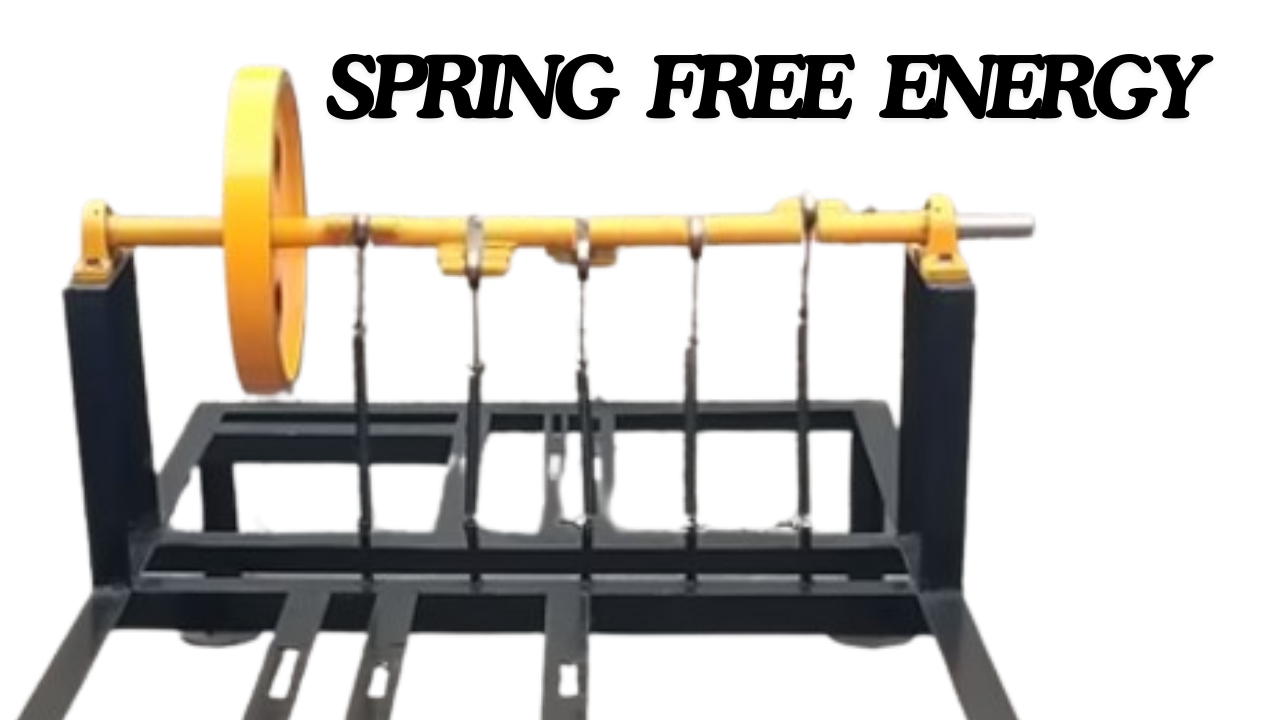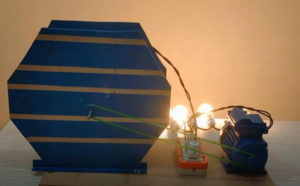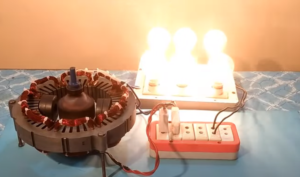How To Make Flywheel Spring Machine Full Process Spring Free Energy Generator With 5 Springs
Greetings and welcome to my digital domain, inverter110.com . Today, we delve into the fascinating subject of spring-based free energy. Numerous digital content creators have explored this topic, each presenting it in their unique manner. However, our focus will be on a self-sustaining free energy generator powered by five springs.
The components required to construct this type of spring-based free energy generator include:
1: Five springs (the number can be adjusted based on the scale of your project)
2: A flywheel
3: A crankshaft
4: A frame constructed from iron angles
One of the remarkable aspects of this project is its operation, driven by the force of the springs Free Energy. We’ve engineered it such that the springs, Free Energy based on their placement, generate the necessary force to keep the generator running indefinitely, unless a component fails or it is manually stopped. The key to this project lies in the strategic placement of the springs. This generator has the potential for perpetual operation. Once initiated, it continues to run, functioning similarly to an engine. The primary distinction between an engine and this spring-based free energy generator is the source of power – while an engine relies on fuel, this generator is powered by springs, hence the term ‘spring free energy’.
Question: Is it feasible to construct Free Energy on a larger scale?
Answer: Absolutely, you can scale up the Spring Free Energy generator. However, bear in mind that an increase in size will also amplify the noise produced, and the likelihood of component failure, such as the springs, will also increase.
The crankshaft has been designed to ensure that three springs consistently exert a downward force. Two springs are always oriented downwards and three upwards to maintain a steady operational speed. This can aptly be termed a ‘spring free energy generator’ as it perpetually generates free energy. In simpler terms, a Spring Free Energy generator is akin to a spring-powered engine.
In our comprehensive guide, we delve into the complex process of creating a Flywheel Spring Machine, a groundbreaking device that harnesses free energy using five springs. This cutting-edge technology is not only eco-friendly but also cost-effective. We will guide you through the entire process, from initial design to final assembly, ensuring a thorough understanding of each step.
Initially, we will explore the fundamental principles behind the Flywheel Spring Machine. This ingenious device operates on the principle of rotational energy, with the flywheel acting as a mechanical battery, storing energy for future use. The springs serve as the driving force, providing the necessary torque to keep the flywheel in motion.
Next, we delve into the design phase, a critical step requiring meticulous planning and precision. The flywheel must be perfectly balanced for smooth operation, while the springs must be carefully calibrated to provide the right amount of force. We will guide you through material selection, dimension calculation, and blueprint creation.
Following the design phase, we move on to assembly. This involves careful installation of the springs onto the flywheel, ensuring even spacing and secure attachment. We will also cover the installation of the bearings, crucial for reducing friction and ensuring the machine’s longevity.
Finally, we discuss testing and fine-tuning of the Flywheel Spring Machine. This crucial step ensures the machine operates at peak efficiency. We will guide you through performance monitoring, identifying potential issues, and making necessary adjustments.
Introduction to Flywheel Spring Machines
Flywheel spring machines are a marvel of modern engineering. They harness the power of kinetic energy to generate free energy. This article will guide you through the process of creating your own flywheel spring machine, a free energy generator using five springs.
Understanding the Concept of Flywheel Spring Machines
Flywheel spring machines operate on the principle of kinetic energy. The energy stored in the flywheel is converted into electrical energy, which can be used to power various devices. The flywheel is set into motion by the tension in the springs, creating a continuous cycle of energy generation.
The Role of Springs in Flywheel Machines
Springs play a crucial role in the operation of flywheel machines. They store potential energy when compressed or stretched, which is then released as kinetic energy when the spring returns to its original shape. This kinetic energy is what sets the flywheel in motion.
Step-by-Step Guide to Making a Flywheel Spring Machine
Gathering the Necessary Materials
The first step in creating a flywheel spring machine is gathering the necessary materials. These include a flywheel, five springs, a generator, and various other components such as bearings, shafts, and a frame to hold everything together.
Assembling the Flywheel and Springs
The next step is to assemble the flywheel and springs. The springs should be attached to the flywheel in such a way that they can exert force on it, causing it to rotate. This is where the potential energy stored in the springs is converted into kinetic energy.
Connecting the Generator
Once the flywheel and springs are assembled, the next step is to connect the generator. The generator is what converts the kinetic energy from the rotating flywheel into electrical energy.
Testing the Flywheel Spring Machine
After everything is assembled, it’s time to test the flywheel spring machine. If everything is set up correctly, the machine should start generating electricity as soon as the flywheel starts rotating.
Optimizing the Performance of Your Flywheel Spring Machine
Adjusting the Tension in the Springs
One way to optimize the performance of your flywheel spring machine is by adjusting the tension in the springs. The more tension there is in the springs, the more energy they can store and release, leading to a higher energy output from the machine.
Maintaining the Flywheel Spring Machine
Regular maintenance is crucial for the long-term performance of your flywheel spring machine. This includes regularly checking and replacing worn-out springs and ensuring that the flywheel is rotating smoothly.
Conclusion
Creating a flywheel spring machine is a complex but rewarding process. By following the steps outlined in this article, you can create your own free energy generator using five springs. Not only will this provide you with a sustainable source of energy, but it will also give you a deeper understanding of the principles of kinetic and potential energy.
Frequently Asked Questions
What is a flywheel spring machine?
A flywheel spring machine is a device that uses the principle of kinetic energy to generate free energy. It uses a flywheel set into motion by the tension in springs to generate electricity.
How does a flywheel spring machine work?
A flywheel spring machine works by converting the potential energy stored in springs into kinetic energy, which is then converted into electrical energy by a generator.
What materials do I need to make a flywheel spring machine?
To make a flywheel spring machine, you will need a flywheel, five springs, a generator, and various other components such as bearings, shafts, and a frame to hold everything together.
How can I optimize the performance of my flywheel spring machine?
You can optimize the performance of your flywheel spring machine by adjusting the tension in the springs and regularly maintaining the machine.
What is the role of springs in a flywheel spring machine?
Springs play a crucial role in a flywheel spring machine. They store potential energy when compressed or stretched, which is then released as kinetic energy when the spring returns to its original shape. This kinetic energy sets the flywheel in motion.




